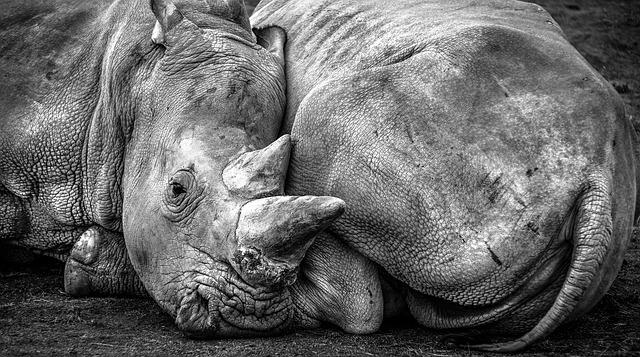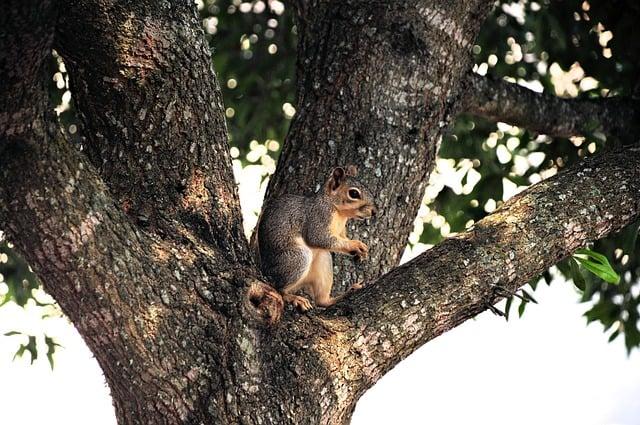- Introduction
- Physical Characteristics of the Etendeka Round-Eared Sengi
- Habitat and Distribution
- Behavior and Lifestyle
- Threats and Conservation Efforts
- Conclusion
- FAQs
- References
Introduction
The Etendeka Round-Eared Sengi (Macroscelides micus) is a fascinating small mammal that belongs to the family of elephant shrews, though they aren't closely related to actual shrews. This intricate creature sports distinctive round ears and roams in southwestern Africa, particularly Namibia. In this article, we will explore the physical characteristics, habitat, lifestyle, and conservation status of this captivating mammal.
We will dive deep into what makes the Etendeka Round-Eared Sengi stand out among other species, how it navigates harsh Namibian landscapes, its social behavior, and more. Finally, we will examine threats to its survival and ongoing conservation efforts to protect this elusive creature.
Physical Characteristics of the Etendeka Round-Eared Sengi

(Image: Pixabay/@iamaliuyar)
The Etendeka Round-Eared Sengi is a petite, mouse-sized mammal weighing approximately 28 grams and measuring about 10-12 centimeters in length. The defining feature of this species is its round ears, which are significantly larger in proportion to its head compared to other sengi species. The large ears are presumed to help in the cooling of body temperature, essential for survival in the arid conditions of Namibia.
Its coat is sandy reddish-brown, blending well with the desert landscape it inhabits, offering excellent camouflage. The underparts are lighter, usually pale gray or white. Its snout is elongated and flexible, designed for sensing its prey underground—a feature common to the sengi family.
Unlike conventional mammals, the Etendeka Round-Eared Sengi has distinctive limb morphology, with long hind legs that allow it to leap similarly to a miniature kangaroo. This unique adaptation aids in fast escapes from predators. Additionally, its sharp claws make it adept at excavating small prey from the desert sands.
Habitat and Distribution

(Image: Pixabay/@NorKu)
This small species thrives in semi-arid to arid environments, predominantly found in the rocky, unforgiving terrain of northwestern Namibia. The Etendeka Round-Eared Sengi specifically resides in the Etendeka volcanic outcrops, hence its name. The area is characterized by sparse vegetation, rocky ground, and variable temperature extremes, providing a relatively isolated environment for the species.
Though it may seem hostile to most animals, such areas represent ideal habitats for the Etendeka Round-Eared Sengi due to the abundance of insects and minimal predation threats. The dense cover of rock outcrops and sparse bushes offer hiding places during the day, as the species tends to be more active during cooler periods—primarily at night and early mornings.
Further dispersal beyond the Namibian borders is unlikely because of their highly specific habitat preferences. So far, there have been no significant reports of the species outside this unique geographic region.
Behavior and Lifestyle

(Image: Pixabay/@stokpic)
Etendeka Round-Eared Sengis are solitary creatures, spending most of their time foraging for food. Their diet consists mainly of insects and other invertebrates, such as ants, termites, and spiders, which they locate using the sensitivity of their elongated snout. Interestingly, while they actively hunt for food, they do not spend much time digging extensive burrows like other small mammals; instead, they create simpler, temporary shelters under rocks or foliage.
In terms of reproduction, these sengis have short breeding seasons and typically give birth to one or two offspring. The young are born remarkably well-developed, equipped with fur and open eyes, allowing them to quickly adapt to their rugged surroundings.
The Etendeka Round-Eared Sengi is also known for its rapid movements. While on the run from predators, including snakes and birds of prey, it uses its long, powerful hind legs to leap considerable distances across open terrain—a trait not commonly seen in other small mammals of its size. This agility helps it escape potential threats in the barren environments it calls home.
Threats and Conservation Efforts

(Image: Pixabay/@Atlantios)
Currently, the Etendeka Round-Eared Sengi is not classified as endangered, but like many species occupying narrow ecological niches, it faces potential threats. One major concern is habitat degradation, primarily due to climate change and agricultural expansion, which threaten the delicate balance of its fragile desert ecosystem. Changes in weather patterns could lead to reduced insect populations, directly affecting the food supply for these mammals.
Additionally, invasive species pose another threat. While the remote areas inhabited by the Etendeka Sengi might offer some protection, the introduction of non-native predators could disrupt this delicate system. Moreover, there are concerns about human activity, such as mining, which could further deteriorate its habitat.
On a positive note, conservation efforts have been underway to ensure the preservation of the Etendeka ecosystem, including strategies for minimizing human impact. National parks and reserves within Namibia provide some degree of protection for this species, and measures are being taken to monitor population numbers to ensure its continued survival.
Conclusion
The Etendeka Round-Eared Sengi, despite its small size, plays a unique and crucial role in the diverse ecosystem of northwestern Namibia. With adaptations that allow it to survive in some of the world's most unforgiving landscapes, this remarkable species showcases the beauty of evolution in action. While they face potential threats due to habitat disturbance and climate change, ongoing conservation efforts give us hope for their future.
By continuing to raise awareness about the importance of Namibia's wildlife and supporting initiatives that protect fragile ecosystems, we can ensure that this species, along with many others, remains part of our planet’s biodiversity.
FAQs
What is a Sengi?
Sengi refers to a family of small mammals commonly known as elephant shrews due to their trunk-like noses. They are native to Africa and are known for their agility and insectivorous diets.
Where can the Etendeka Round-Eared Sengi be found?
This species is predominantly found in northwestern Namibia, particularly in the rocky outcrops known as the Etendeka region.
Is the Etendeka Round-Eared Sengi endangered?
Currently, it is not listed as endangered, but its specialized habitat makes it vulnerable to environmental changes and human activities.
How does the Etendeka Round-Eared Sengi survive in arid environments?
It has adaptations such as long ears for cooling, a camouflaged coat, and the ability to leap long distances, which all help it thrive in the arid, rocky terrains of Namibia.
Can I observe the Etendeka Round-Eared Sengi in nature reserves or wildlife parks?
Although challenging to spot due to its reclusive nature, the species is protected in several regions of Namibia, within national parks and reserves.

